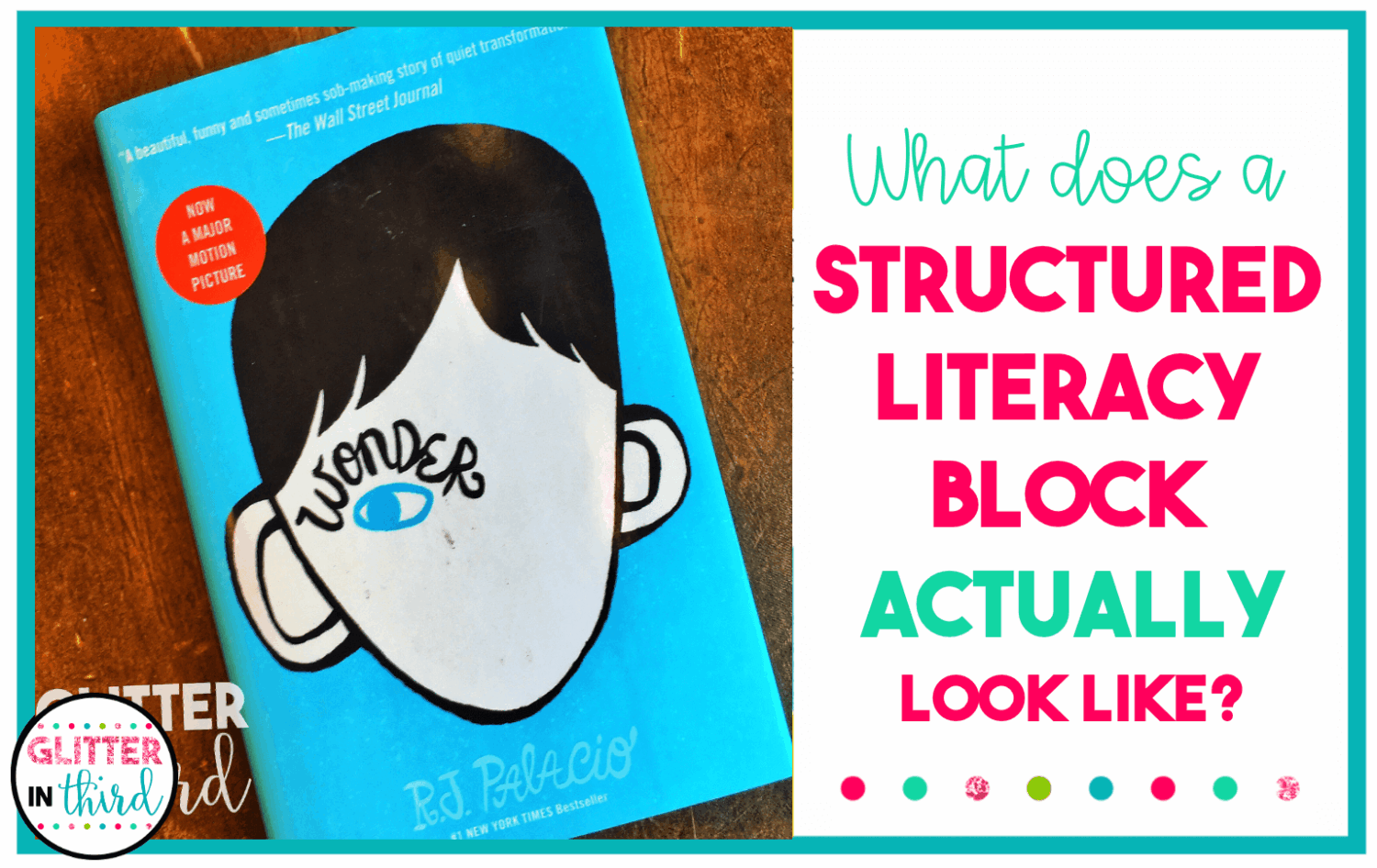Join the VIP Teacher Club!

If you’ve been navigating the Science of Reading, you’ve probably come across the term structured literacy—but knowing what it is and knowing how to actually plan your reading block around it are two very different things.
The good news? You don’t need to throw out everything you’re already doing. A structured literacy approach simply means your reading instruction is explicit, systematic, and intentional, especially when it comes to word recognition and language comprehension.
So what does that actually look like in a 3rd grade classroom?
Let’s break it down.
A structured literacy reading block isn’t just about having a reading time—it’s about intentional, research-based instruction that targets the two essential components of skilled reading, as outlined in Scarborough’s Reading Rope (Not familiar with the Science of Reading rope? Check out my blog post here):
Instead of hoping students “pick up” reading strategies during a read-aloud, you’re explicitly teaching and practicing them—every single day. That means:
Think of it like this: you’re not just giving students a book and crossing your fingers—they’re being taught how to approach the text with purpose and tools.
Here’s a simple breakdown you can tweak to fit your students and schedule:
Kick off with a quick spiral review to reinforce previously taught skills and activate student thinking.
Ideas:
Tip: Use whiteboards for quick, low-prep engagement during this time.
Teach decoding and morphology explicitly. This is where you introduce or review key patterns and structures students need to read and understand unfamiliar words.
Focus Areas:
How to Teach It:
I use my Morphology Notebook here to help students learn and apply prefixes, suffixes, and roots. It builds decoding and vocabulary skills at the same time.
Reinforce word recognition and comprehension through repeated or meaningful reading.
Options:
This is a great spot for my Color-by-Number Reading Passages. Students practice fluency and comprehension while revealing a mystery picture—and it’s completely no-prep.
Teach a focused strategy that students will use with texts—this is your direct instruction piece for comprehension.
Examples:
How to Teach It:
Let students apply the strategy you just taught—independently or in small groups.
Options:
Tip: Keep materials consistent across the week so students build confidence and routines stay tight.

You might be wondering—do read-alouds still have a place in a structured literacy reading block? Absolutely.
Even with a clear structure, read-alouds are a powerful tool for building background knowledge, vocabulary, and comprehension. The key is to use them intentionally:
Think of read-alouds as an opportunity to model the thinking you want students to internalize. Whether you’re using a mentor text during your mini-lesson or carving out time later in the day, they’re an essential part of the big picture.
A structured literacy reading block isn’t rigid—it’s purposeful. With clear routines for decoding, fluency, vocabulary, and comprehension, you’re supporting every strand students need to become confident, capable readers.
Need an easy way to build fluency and reinforce comprehension?
Check out my Color-by-Number Reading Passages—they’re fun, no-prep, and fit perfectly into your structured routine.
Grab them here and give your students practice they’ll actually enjoy.

Hey there, I’m Kelly! I I love helping teachers save time with technology and resources so they have more hours in the day to spend with family and friends. Take a look around to find new ideas that you can implement in your classroom today!